E-Archive
Cover Page
in Vol. 22 - May Issue - Year 2021
Post-processing for Additive Manufacturing
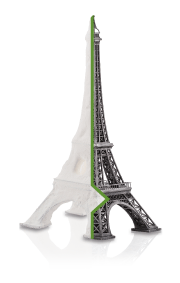
MJF printed Eiffel Tower before and after NAM cleaning process

HP PA12: raw – NAM Cleaning – dyeing – NAM Finishing

NAM Finishing goals
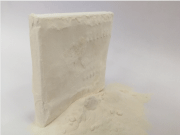
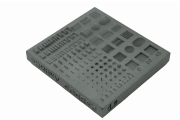
Dimensional Bar for finishing tests – before and after NAM cleaning process
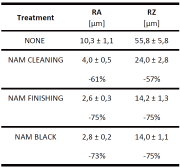
HP PA12 roughness table
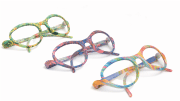
Colour printed sunglasses - courtesy of Raleri Srl
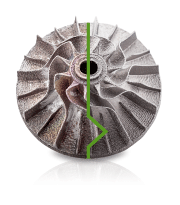
SLM component before and after cleaning

Norblast 3D printing Line
SCENARIO
In recent years, additive manufacturing technology has been characterised by a constant evolutionary trend and an ever-greater presence within industrial production cycles, thus shifting the focus from the use for prototyping purposes to large-scale production objectives. The versatility of this new paradigm for manufacturing – “adding” material where needed, rather than “removing” excess material – has offered a range of benefits to companies, thus proving to be one of the most impactful solutions for the industrial field.
In addition to the careful definition of the printing process and material, the production of components implementing additive manufacturing may require post-processing in order to make the component meet the project technical and aesthetic requirements.
At present, due to the limits inherent to additive printing technologies, the surface finish of the objects obtained might not be adequate to the quality-operational standards required within the production chain: printing residues, surface roughness, aesthetic appearance of the manufactured component.
From a conceptual standpoint, various additive manufacturing technologies are available, based on the type of materials - plastic, metal or other - and on printing methods.
If we focus on plastic polymer powder-bed fusion technologies, the most common printing methods are SLS (Selective Laser Sintering) and MJF (Multi Jet Fusion). Powder is selectively melted using laser beams or high temperature lamps. When printing has finished, the printed item is removed from the unfused powder cake and the powder is recovered to be re-used in subsequent printing sessions. As a result of the process, some residues of semi-fused powder remain attached to the products; the production workflow therefore includes a cleaning phase that is done by sandblasting.
The potential of additive printing to create complex shapes is clear. However, critical issues in printing and post-processing increase if you take into consideration the printing of fragile components, with pins or thin walls, channels, holes, and undercuts. Furthermore, from the point of view of industrial production, repeatability and automation of the finishing process become essential to obtain the expected results in terms of quality, time and costs.
Following these considerations, if post-processing is not performed correctly, aesthetic defects, pertaining to surface and colour uniformity as well as technical defects, where the surface may not be smooth enough or some areas may not be finished correctly, may affect the finished products. This would therefore prove unfit for the project.
Norblast and surface finishing treatments for additive manufacturing
The Norblast Group
The Norblast group has over 40 years of experience as a manufacturer of compressed air sandblasting and shot peening machines.
The processes can be studied in-depth thanks to collaborations with universities and research centers, as well as detailed examination of customer needs through testing in the Norblast Lab, where the experience of Norblast researchers is at the disposal of customers and partners in order to test the best solutions and meet the most complex requirements with a view to continuous technological and service improvement, to industrialise the best possible solution.
The Norblast group also relies on the continuous research of Peen Service, the group subsidiary dealing with shot-peening on behalf of third parties, and having direct on-site experience in the use of many robotic systems.
How the additive manufacturing market sought out Norblast
AM technology has been known for over 20 years. Initial tests on FDM wire-printed objects have yielded some very interesting results, but it was Hewlett Packard’s breakthrough Multi Jet Fusion technology that required raising the bar on AM-printed components finishing. In fact, the production workflow involves sandblasting as an integral part of the manufacturing process: through the cleaning process of the semi-fused powders adhering to the product, it is possible to make the printed products functional.
So, starting from 2017, several customers have asked Norblast for optimised solutions, to perform proper surface finishing on products printed using HP MJF technology.
Norblast has therefore conducted targeted research projects, using its many years of experience gained in the field of conventional technologies, actively collaborating both with long-time customers and directly with the manufacturer HP. In fact, the collaboration with HP Barcelona resulted in the drafting of a specific white paper on the optimised cleaning process, comparing several sand blasting media, conditions of use and evaluating the effects of treatment when applied through full-scale automation with respect to common critical issues occurring in complex products.
Well-established processes for plastic powder bed fusion AM
Thanks to the many tests carried out, some well-established NAM (Norblast Additive Manufacturing) processes have been developed.
NAM C (Cleaning): this is the core process in the production workflow of plastic MJF and SLS components. After having recovered the printing powder, cleaning is performed to remove the semi-fused powders; it is optimised to clean the surfaces extremely quickly, with an innovative sandblasting media ideal for this purpose. This is the most critical process, due to the large amount of print powder adhering to or contained in the printed products. Given the natural complexity of additive manufacturing printed components, special attention has been paid to fragile components such as pins and thin walls, as well as hard-to-reach areas such as holes and undercuts. As the technologies evolved, CAD design for products also began considering post-processing requirements, with respect to the size and bends of through channels, or minimum diameters of non-through holes, as well as pin and wall sizing. This process is also fundamental for preparing any subsequent treatment: finishing by shot peening, vibro-tumbling, chemical smoothing, dyeing, painting, metallisation, etc.
As a result of the process, perfectly clean, homogeneous light grey components can be obtained.
NAM F (Finishing): this process can be carried out after cleaning. It allows for the “smoothing” of the component, thus decreasing the surface roughness. It also makes the component surface much more compact, with the benefit of the component being considerably more scratch-resistant and darker grey in colour than after the cleaning treatment. Combined with dyeing, the process also allows for a semi-gloss finish on the component.
NAM B (Black): this is a process that can be performed with steel sand blasting media as a first cleaning step or as a finish treatment. This results in perfectly clean components with low roughness even during cleaning, which tend to be black. However, there are ferrous residues on the surface of the component, as can occur during graphitization.
NAM PA Colour: this is a special cleaning process to treat colour-printed components (e.g., HP MJF 580) to emphasise the chromatic yield of the products.
Post-processing for other AM technologies
Other plastic polymer printing technologies can benefit from sandblasting to reduce the wire or resin layer form factor, which makes the surface rough. It is also possible to make uneven colour, caused by the position during printing, uniform. It is also possible to prepare the surface for further treatments such as painting.
For metal powder bed fusion (SLM, EBM), post-processing is widely used to perform cleaning of the granules over the surface, to decrease roughness and make the surface uniform, which gives a specific aesthetic effect. The topic of finishing on metallic AM, and specifically the increase of fatigue strength of components through the application of Norblast Shot Peening technology, will be treated in a dedicated article.
Optimised industrial solutions
In the polymer powder-bed fusion processes, there are some critical issues that need to be addressed, particularly in the first process of cleaning the semi-fused powders. These critical issues are due to the amount of residual print powder that goes into the sand blasting machine.
These residual powders are very fine and volatile and have a natural tendency to become electrostatically charged by friction. If the component being processed becomes electrostatically charged, it attracts the suspended powders which remain attached to it after the process. In addition, the aeraulic circuits of standard sand blasting machines may not be properly sized to handle such quantities of powders. During the cleaning process, powder removed from printed components can mix with the blasting media, thus affecting the effectiveness and efficiency of the process.
This is why Norblast has developed the 3D printing Line, the result of collaborations with intensive users of plastic powder 3D printers, with optimised features. The aeraulic suction circuit has been revised in order to maximise powder transport. For electrostatic charging, special ionised compressed air solutions have been implemented, which allow electrostatic charging to be kept to a minimum in order to obtain clean components at the end of the work cycle.
Innovative systems have also been implemented to separate the print powder from the blast media used. In this way, the correct supply of grit on the treated pieces is guaranteed, obtaining an effective and efficient process even during intensive and prolonged use, with countless build units loaded into the machine during the working period, as well as a significant saving in the consumption of the grit used.
Treatments may be largely automated, through large-scale systems. The result is the automation of the work cycle, from components covered with powder at the infeed and finished and blown components at the outfeed of the machine. Today's requirements for interconnection with the factory network are met with management via PLC and connection accessories. The user interface has also been optimised to be specifically user-friendly for operators in the AM environment.
Even for manual use, which may be necessary in the case of particularly difficult shapes, Norblast has developed an optimal user experience thanks to specific ergonomic kits and cleaning of the viewing glass, even for intensive manual use over several shifts.
Conclusions
Additive manufacturing proves to be an exciting and ground-breaking technology. Norblast has brought many years of experience into play as well as continuous research into the processes and machines available to all industries using 3D printing.
By successfully applying know-how, the combined results of printing and post-processing can lead innovative companies to extraordinary results.
For Information:
Norblast S.r.l.
Via Carpigiani, 7
40138 Bologna, Italy
Tel. +39.051.531037
Fax +39.051.530133
E-mail: norblast@norblast.it
www.norblast.it; www.peenservice.it



























